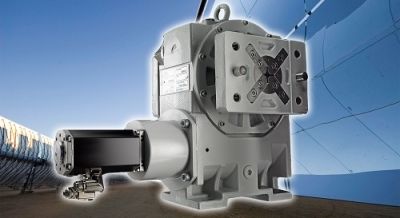Framo Morat Supplies Drives for Reliance Power Solar Plant
In April 2012, the Indian operator Reliance Power, India entrusted Areva Solar with the construction of a 100 MW Concentrated Solar Power (CSP) plant. Reliance Power operates coal, gas, water and renewable energy power plants supplying a total of 5,285 MW. The total of 1,524,600 square meters of Fresnel mirrors are controlled by close to 4,500 drives developed and manufactured by Framo Morat.
Framo Morat won the contract thanks to a successful design proposal - and the know-how gained from many other green energy projects. The order was placed in December 2011 and series production started already in August 2012. This period was used to develop the design concept to a series product, procure globally high-quality components and bought-in parts, and set up a brand new assembly line including the testing stand. Last but not least, a relatively complex logistics concept had to be developed to ensure the smooth transport from Framo Morat to the plant in Rajasthan.
Within one year (from August 2012 to August 2013), almost 5,000 drives have been supplied to India and to two projects in the USA. A single drive controls six reflectors with a total mirror surface of 330 square meters. With a weight of approximately 75 kg and outside dimensions of about 480 x 410 x 240 mm (H x W x D), the drive is both compact and robust.
Motion is ensured by a 400W brushless DC motor provided with a CAN-Bus interface for central control. This motor is connected to a planetary gear developed especially for this control, which supplies an integer gear ratio in all three stages. The following worm gear set has been designed with an extremely low backlash in order to ensure the required positioning accuracy at the output shaft. The integrated absolute encoder with SSI interface measures the accuracy of the drive thanks to a specially developed arrangement of backlash-free gearwheels on the encoder shaft and on the output shaft, therefore offering the possibility of an individual re-adjustment by the control.
The interaction between positioning accuracy on the one hand and torque on the other hand was one of the challenges of this project. The required torque entailed a relatively high reduction ratio, for this reason, the necessary accuracy could only be achieved using highly accurate toothed components with extremely low backlash.




